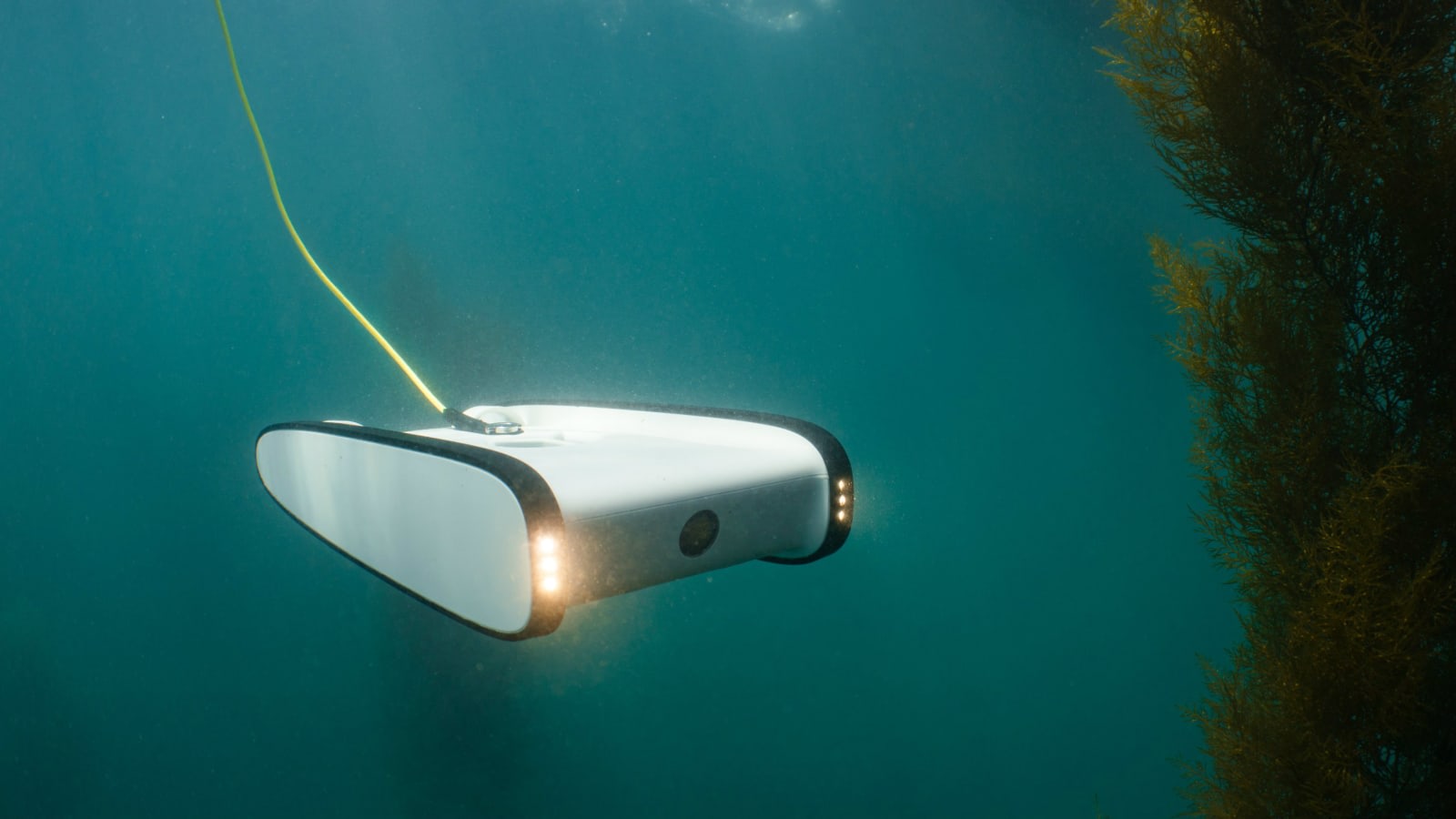Listen up underwater explorers, researchers, and filmmakers. If you’ve been wanting to add a remotely operated vehicle to your inventory of tools, National Geographic and OpenROV may be able to help you out. The two organizations have joined forces to give away 1000 underwater drones to help others who are focused on revealing the secrets of the deep.
Next year, Nat Geo and OpenROV will launch what they call the Science Exploration Education (SEE) program, which is designed to help advance our understanding of the Earth’s oceans. As part of that initiative they’ll be handing out a remotely operated vehicle that has been specifically built for use underwater. Priced at $1700, this undersea rover comes equipped with cameras, lights, and a propulsions system. The entire unit sits at the end of a 25 foot (7.6 meter) tether, that allows a pilot on the surface to control where it goes and what it sees.
The rover itself was developed by OpenROV and built from the ground up to be an affordable and easy to operate drone to help further our research in the oceans. As with aerial drones, it is outfitted with an array of technology that allows it to be used as tool for a variety of tasks. The built-in tether ensures that the device doesn’t get lost however and that it continues to receive commands from its pilot, even while under water.
The intention is to get as many of these drones into the hands of researchers as possible. To do that, National Geographic will be giving them away as part of its Open Explorer platform, which built to allow scientists and researchers to share their data, receive input from others, and promote their projects with the general public. To apply to receive one of the drones, all you have to do is go to the Open Explorer webpage, create a profile if you don’t already have one, and then use the “Start an Expedition” option to share your research project. Each of those submissions will then be reviewed by the SEE team with the ROVs being awarded to those that they deem most in need.
This is a great opportunity for explorers and researchers to get a new tool for their arsenal. While arial drones have been around for awhile, I feel like these underwater versions are just now starting to come into their own. This is your chance to potentially get your hands on one courtesy of Nat Geo and OpenROV, which is a pretty cool initiative to say the least.
- Gear Review: The Xero Scrambler Mid is an Ultralight Hiking Shoe for Spring - March 1, 2023
- Gear Review: Yeti Roadie 48 Wheeled Cooler - August 18, 2022
- Kristin Harila Continues Pursuit of 8000-Meter Speed Record - August 16, 2022
